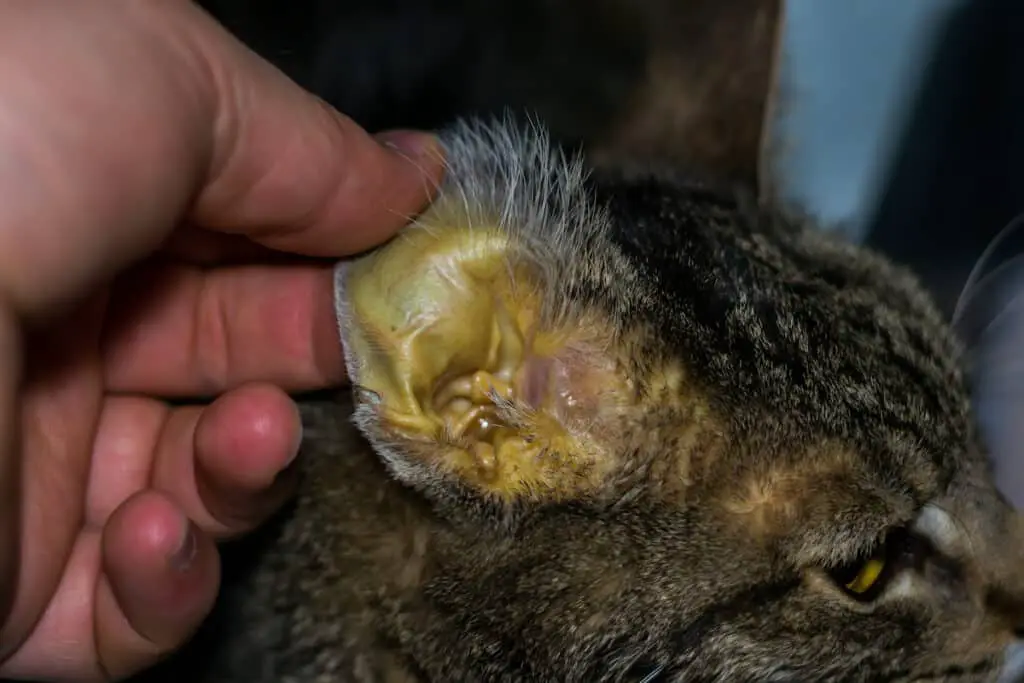Whether your cat is jaundiced or not, there are ways to diagnose the condition and treat it. These are outlined in this article.
Symptoms of jaundice in cats
Symptoms of jaundice in cats include yellowing of the eyes, gums, skin, and the back of the mouth. Jaundice is caused by a build-up of bilirubin in the bloodstream. Medications, parasites, and toxins can also cause jaundice.
A veterinarian will do a basic physical examination of the cat to determine the cause of the jaundice. During the exam, the veterinarian will assess the cat for changes in red blood cell structures and levels of liver enzymes. He will also check for changes in urine concentration. He may order x-rays, ultrasound, or blood tests.
Some of the most common causes of jaundice in cats are hepatitis, leptospirosis, infectious peritonitis, cholangiohepatitis, and feline infectious peritonitis. In severe cases, blood transfusions may be necessary.
In severe cases of jaundice in cats, blood cells may be damaged, and a cat may become lethargic. Medications that lower the immune response may also be prescribed. Antiemetics can reduce vomiting and allow the cat to recover from nausea and appetite loss.
A veterinarian may prescribe antibiotics, steroids, or vitamin supplements to treat the cause of jaundice. These medications may also slow down the rate at which red blood cells are being destroyed.
In severe cases, jaundice may affect the gums, the tongue, and the mucous membranes of the mouth. In cats, jaundice can also be accompanied by diarrhea.
Treatments for jaundice in cats
Various conditions can cause jaundice in cats. It is important to seek medical attention immediately if your cat shows signs of jaundice. The condition may be a sign of an underlying disease. Your vet will be able to diagnose the condition with a blood test or a physical exam.
The first step is to determine the cause of the jaundice. Your vet may carry out blood work to examine your cat’s blood. This test will also measure the function of your cat’s liver. The liver can be affected by a variety of conditions, including bacterial infections. If the liver is affected, your veterinarian may prescribe medication or surgical procedures to treat the condition.
Jaundice can also be caused by other diseases, such as heartworms, toxic plants, or cancer. In such cases, the cat’s digestive system may not be able to properly absorb vitamins and minerals. Your veterinarian may recommend nutritional therapy to resolve the condition.
In addition to a physical examination, your veterinarian may perform blood tests or an ultrasound to determine the underlying cause of the jaundice. The tests can also be used to assess your cat’s overall health. They can also be used to assess specific diseases, such as feline leukemia virus.
Your veterinarian will also check your cat’s urine and sputum. The urine may be dark because it contains high levels of bilirubin. Your veterinarian may also order x-rays to check the size of your cat’s liver.
Diagnosis of jaundice in cats
Fortunately, most cats are able to recover from jaundice with proper care. However, your cat’s prognosis will depend on the underlying cause.
Jaundice is a condition in cats caused by an increased amount of bilirubin in the blood. This yellow pigment is produced by the red blood cells. Normally, the pigment is present in the blood in a small amount. However, jaundice occurs when the level of pigment in the blood increases to a level that is too high.
The diagnosis of jaundice in cats is based on a physical examination, blood work, and additional diagnostic testing. The veterinarian may perform an ultrasound to look at the liver’s functions.
Blood work will include tests for bilirubin, electrolytes, liver function, and red blood cell and white blood cell structures. If these tests are positive, a liver biopsy may be performed. This is done through the skin under ultrasound guidance.
In addition to identifying the cause of jaundice, the vet will also develop an effective treatment plan. If the cat’s condition worsens, additional testing and treatment may be required. The prognosis will depend on the underlying cause of jaundice, as well as the cat’s age and lifespan.
If the cause of jaundice is a liver disease, treatment may be limited to supportive care. If the cause is pre-hepatic, such as liver shunts, or post-hepatic, such as cirrhosis, the aim of treatment is to address the underlying cause.














